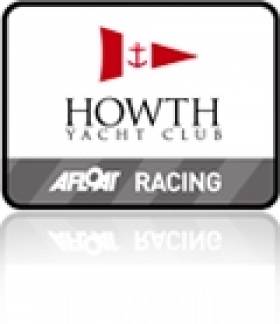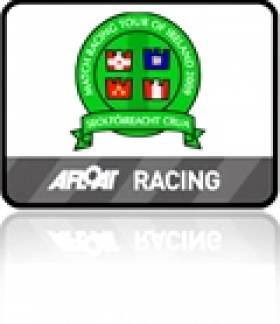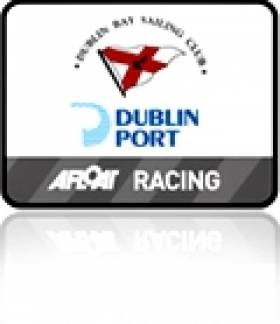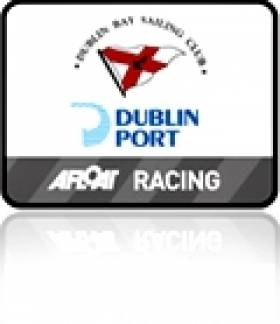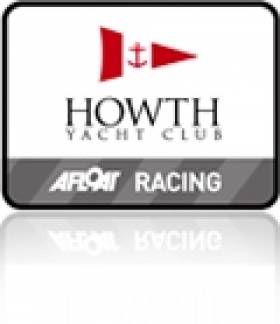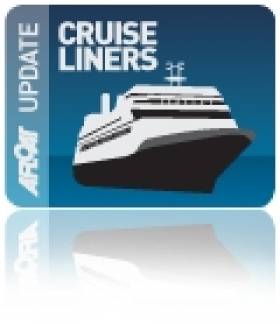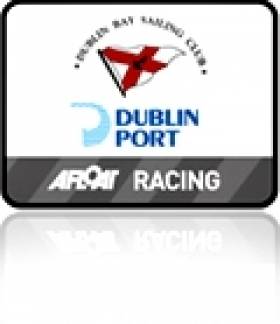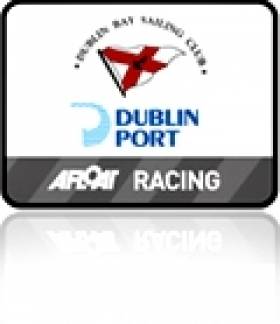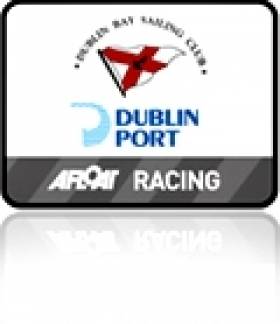Displaying items by tag: Dublin Bay
Blue Velvet Wins in Howth Yacht Club
HOWTH YACHT CLUB. TUE + SAT SERIES 3 (RACE) 20/07/2010 17 Footer SCRATCH: 1, Rita Lynch/Curley; 2=, Aura I Malcolm; 2=, Leila R Cooper; 17 Footer HCAP: 1, Echo B & H Lynch; 2, Rosemary Curley/Jones; 3=, Aura I Malcolm TUESDAY SERIES 3 (RACE) 20/07/2010 Puppeteer SCRATCH: 1, Blue Velvet C & K Kavanagh; 2, Yellow Peril N Murphy; 3, Enigma D Butler; Puppeteer HPH: 1, Apollo M & D Patton; 2, Nefertari Morgan/Murray; 3, Mr. Punch NiBhraonain/Wilson; Squib SCRATCH: 1, Chatterbox J Kay; 2, Arctic Fox G Barry; 3, Kerfuffle J & H Craig; Squib HPH: 1, Arctic Fox G Barry; 2, Chatterbox J Kay; 3, Shadowfax P Merry; Etchells SCRATCH: 1, Kootamundra Wattle O'Grady/Reilly; 2, Fetching Quinn/O'Flaherty; 3, Jabberwocky S Knowles; SB3 SCRATCH: 1, Investwise D Quinn; 2, Einstein's Nightmare J Wenski; 3, Sin a Bhuifl Guinness/Costigan
Follow the Match Race Challenge Online
The organisers of this weekend's inaugural International Match Race Challenge are attempting to make the regatta a multimedia spectacle, with live reports on the action in Dun Laoghaire's Scotsman's Bay relayed to a constantly updated website. The new site, live at matchracing.ie/challenge, will be refreshed with updates, pictures, and audio from the racecourse with a reporter watching the action and posting bulletins in real time.
The website will be displayed in the Royal St George Yacht club, and will auto-refresh every few minutes to ensure that spectators can track the action as it happens. Any club in Ireland whose members are involved can do the same and track the event live over the internet. Live commentary will also be broadcast on Channel 77 for the duration of the regatta.
The International Match Racing Challenge pits six international teams against the top six Irish teams. Spectator packages are still available for the event, in which a paying spectator can sit in one of the boats as it races, watching the action from the cockpit. Details are HERE.
'Hyfive' Continues Winning Way on Dublin Bay
Zu Wins Windy Dublin Bay Race Tonight
Winds gusting to 20 knots greeted tonight's Dublin Bay Sailing Club fleet for its regular Thursday night league. Peter Dee's Dragon Zu was the winner of the Dragon class. Full sailing results are posted over the fold.
Dublin Port Dublin Bay Sailing Club Results for 15 JULY 2010
Kelly's Storm Wins IRC One in Howth
HOWTH YACHT CLUB. WEDNESDAY SERIES 2 (RACE) 14/07/2010 Class 1 IRC: 1, Storm P Kelly; 2, Makutu Doyle/Others; 3, Tiger Hughes/Harris; Class 1 HPH: 1, Joslim J Connolly; 2, Makutu Doyle/Others; 3, Storm P Kelly;
New Business Could Float in on the Tide
Local TD and Minister of Sport Mary Hanafin has given her support to Dun Laoghaire Harbour Company's initiative to promote the town as a cruise tourism destination on Dublin Bay. Writing in her latest newsletter to constituents this month, the Minister says she will do everything within her remit to support the bid.
Tiller Girl Takes Tuesday Mermaid Race
CRUISERS 2 - 1. Borraine (Ean Pugh), 2. Cor Baby (Keith Kiernan et al), 3. Katanca (C. Ennis/B O'Connor)
CRUISERS 3 - 1. Chouskikou (R.Sheehan/R.Hickey), 2. Pamafe (Michael Costello), 3. Grasshopper 2 (K & J Glynn)
Liffey Ship Building Story Brought to Life for First Time
To the vast majority of people, when shipbuilding in Ireland is mentioned, they think only of Belfast, the Harland & Wolff shipyard and the tragic maiden voyage of the Titanic in 1912.
However, there was a vibrant shipbuilding industry in Dublin for nearly two centuries and the story of the different shipyards, the ships they produced and the people who worked there is told here for the first time. Pat Sweeney provides a comprehensive examination of the origins and progress of shipbuilding and ship repair on the Liffey, and documents the progression of the shipbuilding industry in Dublin from its early days at the Walpole and Webb shipyard, through the boom periods of the First and Second World Wars, to the gradual decline of the industry in the late twentieth century.
Pat Sweeney was the Editor of the Maritime Institute of Ireland's journal for 22 years. He was also the only Dublin-based photographer for Lloyds List, London's premier shipping journal, and has contributed several articles on Irish and international shipping to the Irish Independent.
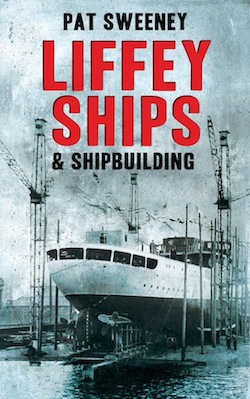
Liffey Ships & Shipbuilding is published in paperback at €19.99
O'Neill on Top in SB3 Dublin Bay Race
Barry O'Neill of the Royal St. George Yacht Club topped a 12-boat SB3 fleet tonight in perfect southerly sailing conditions on Dublin Bay. In a tight rounding of the 40-foot mark O'Neill at the helm of Sin Bin, already the winner of the DBSC first mid week series, produced another win. Full DBSC results from tonights racing below:
DUBLIN PORT Dublin Bay Sailing Club Results for 1 JULY 2010
BENETEAU 31.7 ˆ ECHO 1. Prospect (Chris Johnston), 2. Kernach (Eoin O'Driscoll), 3. Flying Machine (Conor O'Gallagher)
BENETEAU 31.7 - 1. Prospect (Chris Johnston), 2. Flying Machine (Conor O'Gallagher), 3. Magic (D.O'Sullivan/D.Espey)
CRUISERS 0 ˆ ECHO 1. Lively Lady (Derek Martin), 2. Tsunami (Vincent Farrell)
CRUISERS 0 - 1. Lively Lady (Derek Martin), 2. Tsunami (Vincent Farrell)
CRUISERS 1 - 1. Gringo (Tony Fox), 2. Aztec 3 (Peter Beamish), 3. Joker 11 (John Maybury)
CRUISERS 1 - ECHO 1. Indecision (Declan Hayes et al), 2. Gringo (Tony Fox), 3. Aztec 3 (Peter Beamish)
CRUISERS 2 - ECHO 1. Dick Dastardly (B.Cusack et al), 2. Kamikaze (P.Nash/B.McIntyre), 3. Peridot (Jim McCann et al)
CRUISERS 2 - 1. Dick Dastardly (B.Cusack et al), 2. Peridot (Jim McCann et al), 3. Free Spirit (John O'Reilly)
CRUISERS 3 - ECHO 1. Supernova (K.Lawless et al), 2. Lady Rowena (David Bolger), 3. Asterix (J.Counihan/F.Meredith)
CRUISERS 3 - 1. Supernova (K.Lawless et al), 2. Rattler 2 (Austin Whelan), 3. Asterix (J.Counihan/F.Meredith)
CRUISERS 4 - 1. Aslana (J.Martin/B.Mulkeen), 2. Maranda (Myles Kelly)
DRAGON - 1. Phantom (D.Williams/P.Bowring), 2. Zinzan (Daniel O'Connor et al), 3. Susele (Michael Halpenny)
FLYING FIFTEEN - 1. Deranged (C.Doorly), 2. The Big Bow Wow (N.Meagher/N.Matthews), 3. Flyer (Niall Coleman)
GLEN - 1. Glenmarissa (F.Elmes/W.Higgins), 2. Glendun (B.Denham et al), 3. Glenshane (P Hogan)
RUFFIAN 23 - 1. Ruff N Ready (Ann Kirwan et al), 2. Diane ll (Bruce Carswell), 3. Ruffles (Michael Cutliffe)
SB3s - 1. Sin Bin (Barry O'Neill), 2. Design Security (Colin Galavan), 3. Mosquito (Paul O'Callaghan et al)
SHIPMAN - 1. Twocan (David Freeman), 2. Jo Slim (J.Clarke et al), 3. Whiterock (Henry Robinson)
SIGMA 33 - 1. White Mischief (Timothy Goodbody), 2. Popje (Ted McCourt), 3. Springer (I.Bowring)
SQUIB - 1. Anemos (Pete & Ann Evans), 2. Chillax (Mary McLoughlin), 3. Nimble (Brian O'Hare)
WHITE SAIL CRUISERS - ECHO 1. Windshift (R O'Flynn et al), 2. Calypso (Howard Knott), 3. Edenpark (Liam Farmer)
WHITE SAIL CRUISERS - 1. Windshift (R O'Flynn et al), 2. Persistence (C. Broadhead et al), 3. Calypso (Howard Knott)
Flor O'Driscoll's Championship winning J24 has added another title to the cabinet this week when Dublin Bay Sailing Club released the 28 winners of its first mid-week series. O'Driscoll who picked up the overall award at last year's 2009 Volvo Dun Laoghaire Regatta is back in form taking the honours now in Class three.
DBSC organises racing on the bay for all the waterfront yacht clubs in Dun Laoghaire and the town marina, producing a combined fleet of nearly 300 boats. Its Thursday night fleet is one of the biggest yacht club turnouts in Europe.
George Sisk's Wow won Class Zero on IRC Handicap. A combined prize Cruisers Zero and One was was also awarded and this went to John Maybury's J109 Joker. ECHO honours in class zero went to Round Ireland entrant Tsunami sailed by Vincent Farrell. In the one design fleets Dick Lovegrove's Rupert was top in the Sigma 33s and Frank Hamilton's dinghy Dunmoanin' was the IDRA 14 winner. The first series winners are published below:
Midweek IRC Series 1:
Cruisers 0: WOW (George Sisk)
Cruisers 1: Jalapeno (Dermod Baker & others)
Combined Crs 0 & Crs 1: Joker 2 (John Maybury
Cruisers 2: Jawesome 2 ( Vivion Kennedy & others)
Cruisers 3: Hard on Port ( Flor O'Driscoll)
White Sails: Act 2 : Michael O'Leary & others
Midweek Echo Series 1:
Cruisers 0: Tsunami (Vincent Farrell)
Cruisers 1 Jalapeno (Dermod Baker & others)
Combined Crs 0 & Crs 1: Jalapeno (Dermod Baker & others)
Cruisers 2: Red Rhum (J. & C.Nicholson)
Cruisers 3:Asterix (J. Counihan & others)
Cruisers 4: Maranda (Myles Kelly)
White Sails: Act 2 : (Michael O'Leary & others)
31.7s Flying Machine (Conor O'Gallagher)
Midweek: One Designs: Series 1
Sigma 33s: Rupert (R.Lovegrove & P. Varian)
31.7s: Prospect (Chris Johnston)
Shipmans: Curraglas (John Masterson)
Dragons Diva (R. Johnson & T. Goodbody)
Ruffians: Ruffles (Michael Cutliffe)
Glens: Glendun (B.Denham & others)
SB3s: Sin Bin (Barry O'Neill)
Flying 15s:Fifty Somethings (David Mulvin)
Mermaids: Tiller Girl (Jonathan O'Rourke)
Squibs: Little Demon: (Marie Dee & Sheila Power)
Fireballs: Elevation (Neil Colin & Margaret Casey)
IDRA 14s: Dunmoanin' (Frank Hamilton)
Portsmouth Y'stick: Laser 178952 (Peter Craig)
Water Wags: Moosmie (David McFarlane)
There is regular DBSC coverage on Afloat.ie. Results posted immediately after race HERE


























